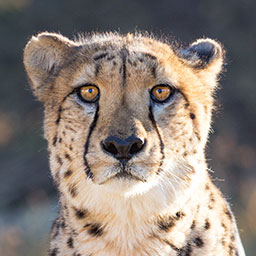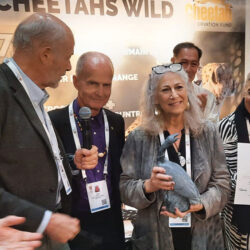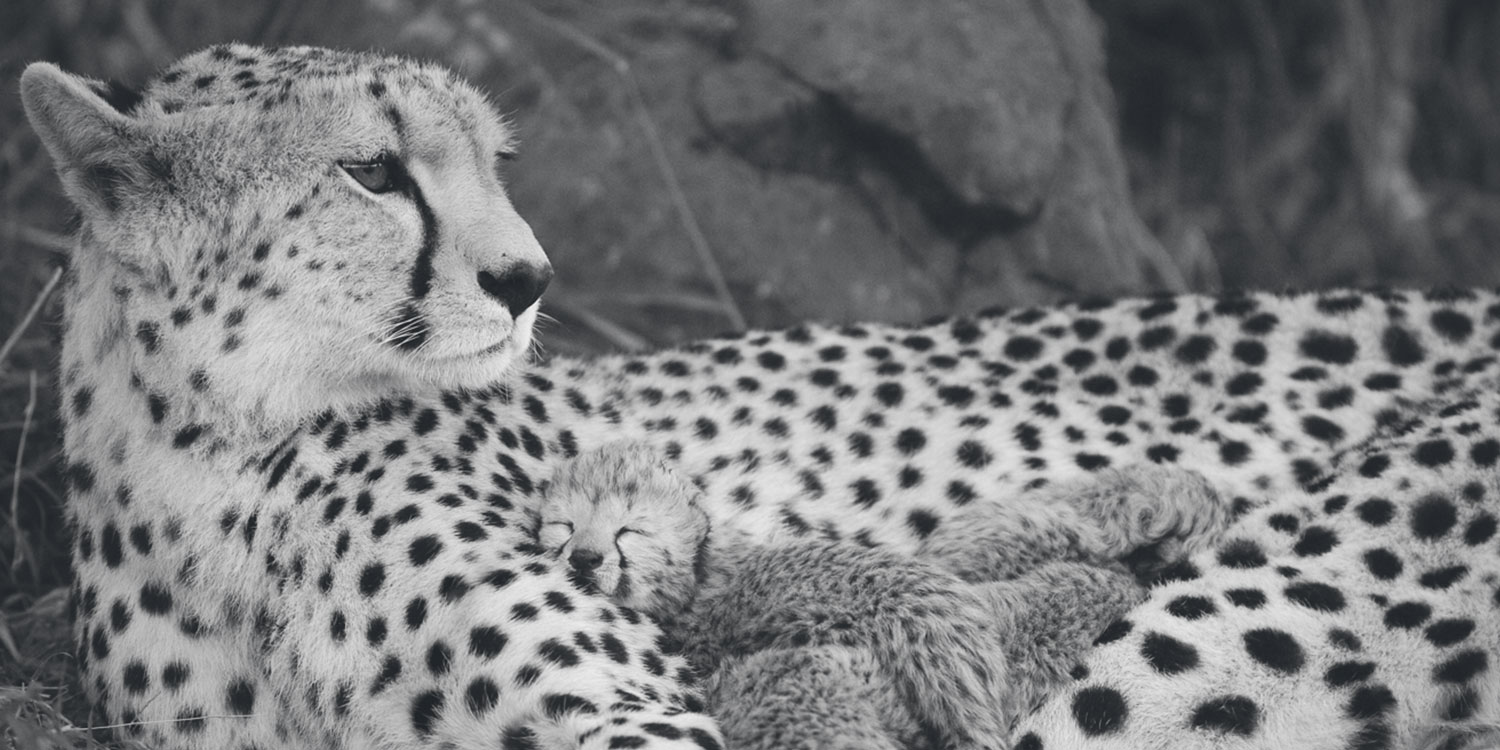Africa’s Fastest – and Most Endangered Big Cat – Subject of New Book; Cheetah’s Race Against Extinction Is Examined by World Expert A FUTURE FOR CHEETAHS
-

- by CCF Staff February 10, 2014
FOR IMMEDIATE RELEASE
CONTACT: Liz Georges, Communications Coordinator, [email protected]
Africa’s Fastest – and Most Endangered Big Cat — Subject of New Book; Cheetah’s Race Against Extinction Is Examined by World Expert A FUTURE FOR CHEETAHS
WASHINGTON, DC (Feb. 10, 2014) — The soon-to-release photography book A Future for Cheetahs (publication date: 4/2014) is a celebration of this remarkable animal and a warning cry about its future. Populations have dropped from 100,000 to 10,000 in Africa in the last 100 years, with a small population surviving in Iran.
The 140-page book is written by Dr. Laurie Marker, one of the world’s authorities on cheetahs and Founder and Executive Director of the Cheetah Conservation Fund. Rare and striking photographs of cheetahs in the wild are provided by Suzi Eszterhas. The beautiful photography will bring the reader literally face to face with the cheetah and its cubs.
The cheetah is the fastest hunter in Africa, reaching a speed of 70 miles per hour covering up to 25 feet in a single stride, with only one foot touching the ground at once. Dr. Marker explains, “Nothing in the world can equal the cheetah’s speed, build or adaptations. But right now it’s running its most important race – for survival. I think we can still win.”
Dr. Marker began her study of cheetahs 35 years ago, eventually moving to Namibia, where she has lived for 20 years. Namibia has the largest number of free-ranging cheetahs, with 35 percent of the world’s wild population. In Namibia, Dr. Marker turned a humble research station into an internationally recognized research and education center that has become a model for predator conservation worldwide. It includes a state-of-the art veterinary clinic and the only fully capable genetics lab located at an in situ conservation site in Africa.
The book explains the reasons for the dwindling number of cheetahs but provides hope for the future. Among the reasons for declining numbers: killing from human-cheetah conflict, loss of habitat, and poaching. There was a historical belief by farmers that the only good cheetah was a dead cheetah.
“Today, cheetahs are living in a human dominated landscape,” explains Dr. Marker in the book. As habitats get smaller cheetahs are overlapping more with with humans and livestock.
The book addresses Dr. Marker’s innovative initiatives is addressing retaliatory killing of cheetahs by farmers. She began breeding and donating Anatolian Shepherd dogs to guard livestock from cheetahs. “It really works,” she said. Farmers see their losses from all predators reduced by 80 to 100 percent. The livestock guard dog program is part of a larger effort at training local farmers and ranchers in a wide variety of best practices that allow for a shared environment with native wildlife.
“We’re showing that good livestock management means that farmers and predators can live together. Cheetahs and farmers can go-exist,” said Dr. Marker.
The book provides insight and an overview of cheetah’s behaviors, reproduction, life expectancy and problems with captivity. “For the cheetah, their future is unknown and it is in our hands as humans to ensure they survive,” writes Dr. Marker.
Dr. Laurie Marker has received many international awards for her work in cheetah conservation. She was recognized as one of Time magazine’s Heroes of the Planet. She also received the Conservation Medal of a Lifetime Achievement Award from the Zoological Society of San Diego and the Explorer’s Club Lowell Thomas Award.
Suzi Eszterhas is an award-winning wildlife photographer based in California. Best known for her work documenting family life on the African savanna, she has undertaken commissions and led instructional photography tours and workshops everywhere from Antarctica to the Arctic and Alaska to Montana. Her photographs have been published in books, magazines and newspapers all over the world and she is a Fellow of the International League of Conservation Photographers.
Book tour cities in April and May will include: Dallas, Los Angeles, New York, Palm Desert, Portland, San Francisco, San Jose, Seattle and Washington, D.C.
Related Reading


